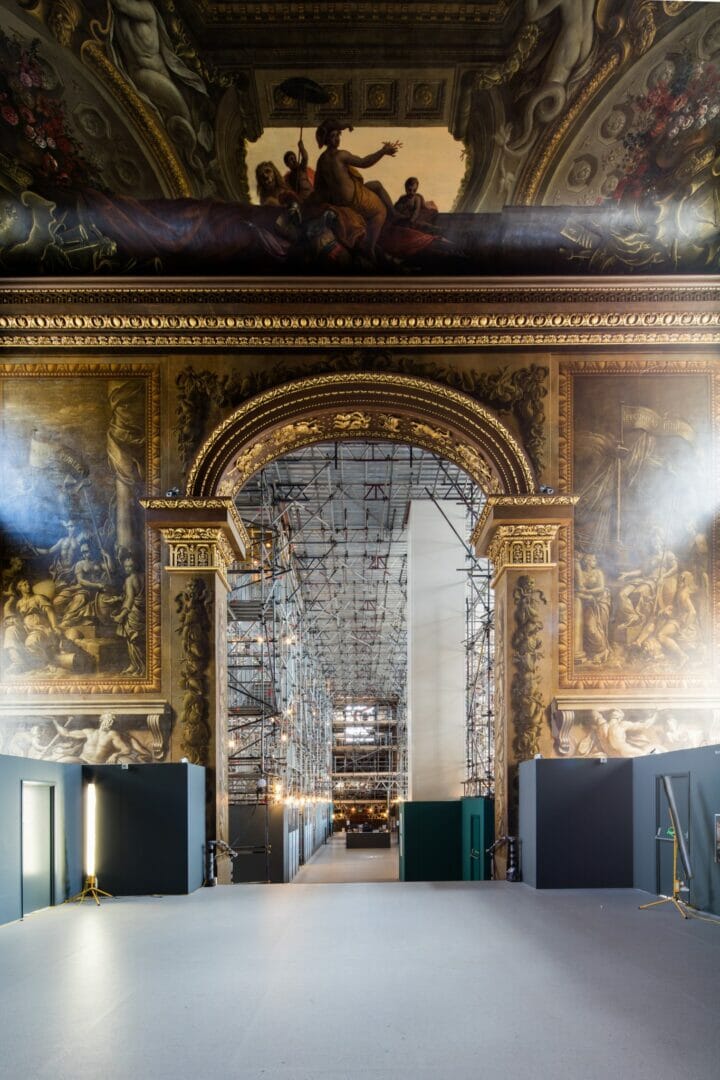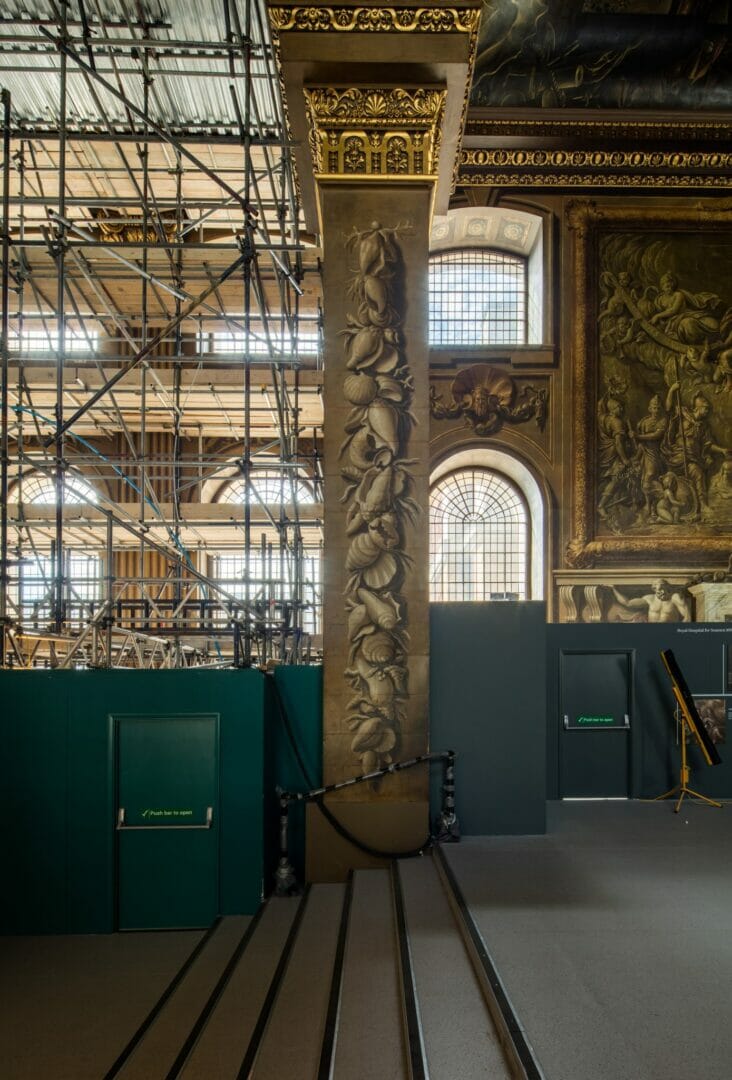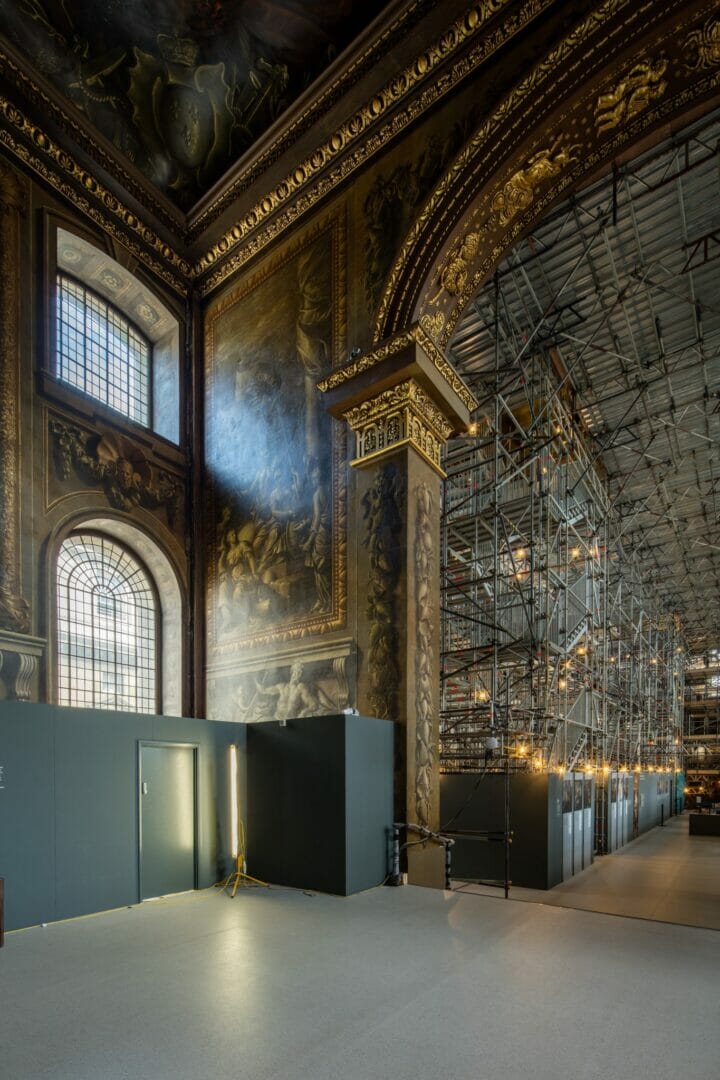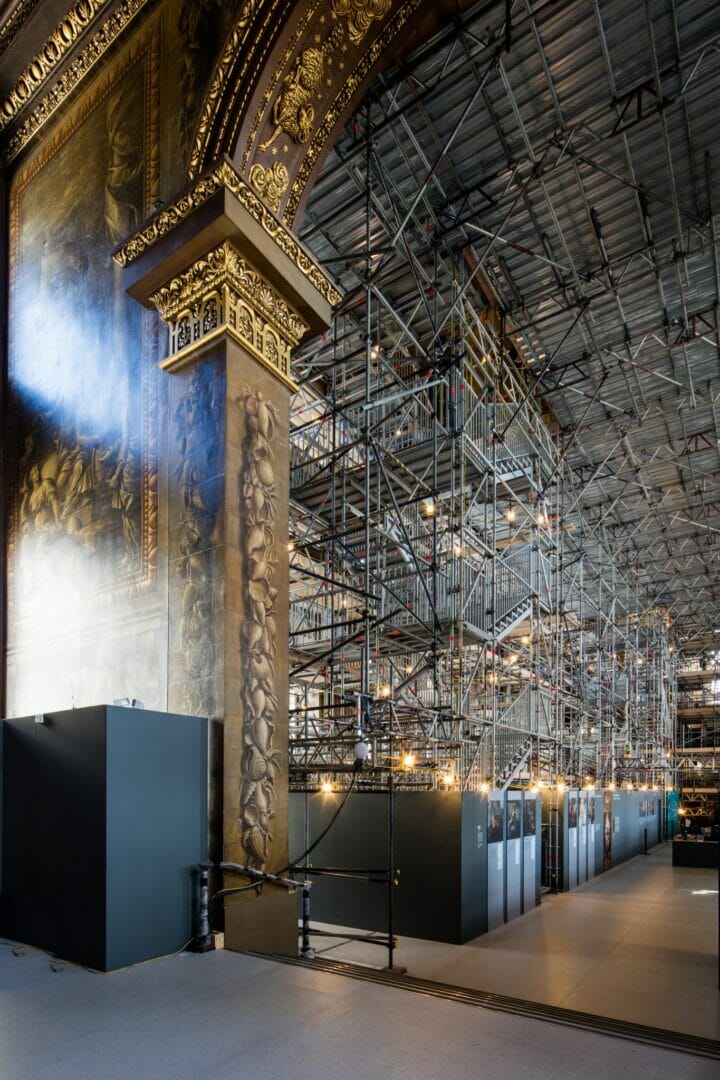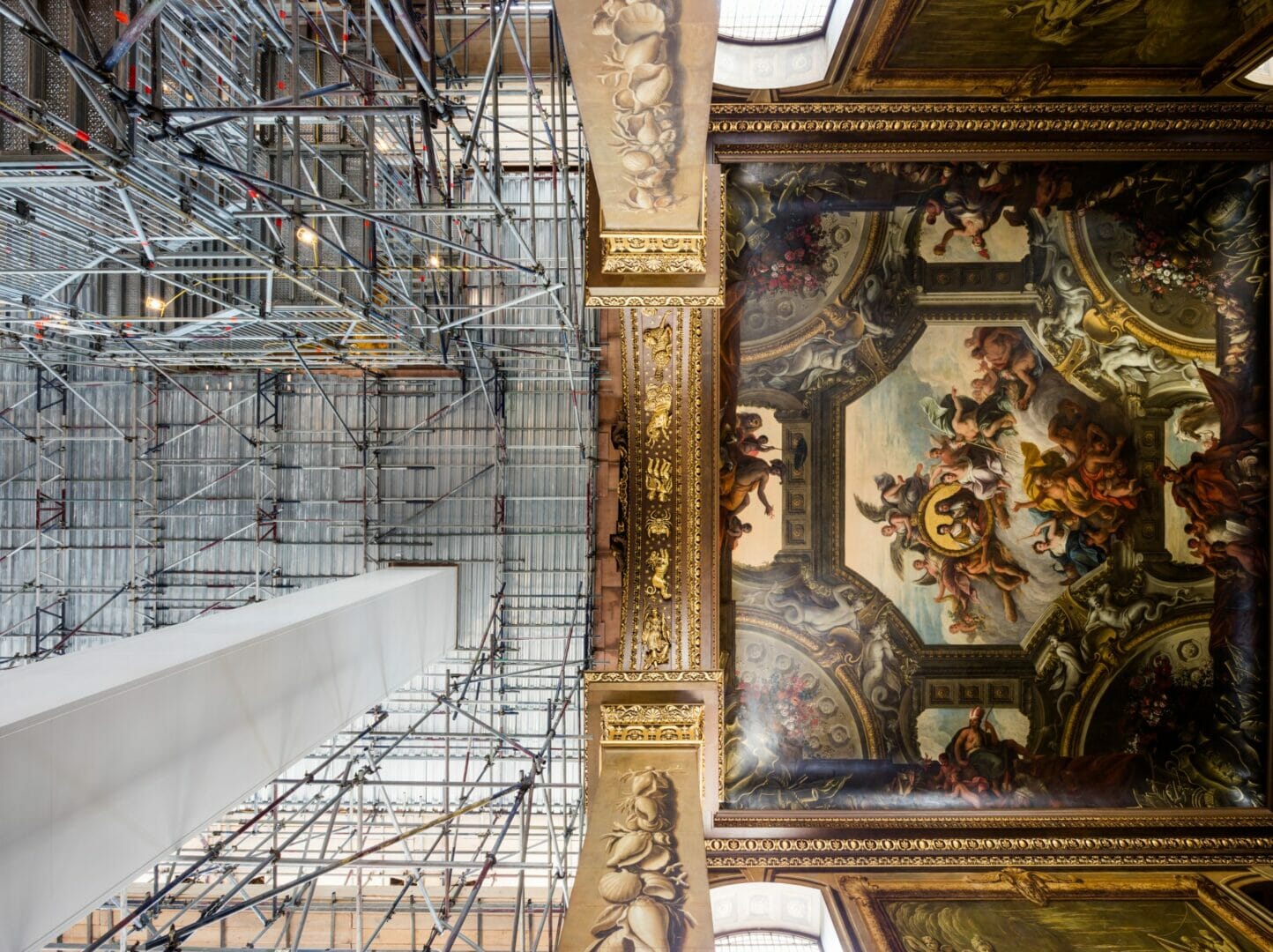
Billy Jones from scaffolding specialist, Millcroft, discusses the challenges of providing free-standing access platforms for the Restoration of the Painted Hall for The Greenwich Foundation.
Referred to by some as the ‘Sistine Chapel of the North’, the Painted Hall at the Royal Naval College at Greenwich is one of the jewels in the crown of the UK’s naval heritage. A Grade 1 Listed building and Scheduled Ancient Monument, it is the location where Nelson lay in state as thousands of mourners paid their respects.
The Painted Hall takes its name from more than 7000m2 of frescos that cover the walls and ceiling, which make it the largest fresco in Northern Europe. For the past fifty years, these decorative surfaces have remained untouched by restorers but a major Heritage Lottery funded conservation project, ten years in the planning, has now been carried out to clean the precious paintings and continue their preservation for future generations.
Amongst the challenges of this delicate project was constructing the access needed for the restorers to carry out the work, which involved maintaining their safety while enabling the painstaking work. Adding to the complexities of this, The Greenwich Foundation also wanted to give the public access to the once-in-a-generation conservation project with guided tours of the work, which needed to be accessible to all. To facilitate this, Millcroft was brought in to design, build and manage a bespoke scaffolding solution, leveraging the company’s 40 years’ experience in the heritage buildings sector to address the unique requirements of the scheme.
Complex Challenges
The conservation project was carried out in two core phases, with the work on the dome-roofed Vestibule scheduled to take place first, followed by the main Painted Hall area. Consequently, the Millcroft team was required to design the scaffolding for the whole project and erect the Vestibule scaffolding first so that work could commence in this area and continue here during the five-month programme to erect the scaffolding in the Painted Hall.
For both areas, the in-house design team had to work within strict parameters provided by The Greenwich Foundation to ensure the structure and the artwork were protected. The scaffolding had to be free-standing to avoid any damage risk to the delicate frescos on the walls and ceilings and it also had to be erected within restricted loading requirements to avoid any structural damage to the building or risk to the floor finishes from loading stress or puncturing.
The client provided the maximum loading data and, because all the works were indoors, there were no additional wind loading issues to consider, however, creating a lightweight structure that rises 14 metres from the floor to the main deck while providing a solution that was robust enough to ensure the safety of both staff and visitors was no small task.
Meanwhile, the solution also had to allow the conservation team sufficient work areas to access the frescos, taking into account both their working methodology and their safety while working at height. This required close consultation with the restorers to understand the amount of space required for them to carry out their work and the distance required between the edge of the working area and the surface of the fresco. Moreover, these requirements were not static and the scaffolding design had to be able to accommodate adaptations over the course of the restoration programme.
Finally, the design criteria also included creating visitor access that was safe and presentable for public visits, including disabled access, and maintaining staff access to key areas of the building.
Heritage Specialism
To address these challenges, the scaffolding was modelled in 3D with meticulous calculations to align the fixing intervals to the loading requirements. The weight of the large-scale scaffolding structure was dramatically reduced by the use of aluminium tube rather than steel, and traditional wooden scaffold decking was replaced by profiled metal, which reduced both the weight of the system and the fire risk in the sensitive setting.
Supporting access towers were installed to spread the weight load evenly across the floor and high specification vinyl was used to protect the tiled floor from compression damage or puncturing while maintaining a high quality aesthetic suitable for public visits.
For the public access routes, a bespoke access lift was commissioned and erected and two public access-rated staircases were constructed. A ply layer was then laid onto the metal deck for the public access routes and the viewing gallery to maintain a consumer-facing finish and wheelchair-friendly surface. The Millcroft team was also responsible for erecting hoardings onto the scaffolding at ground level to enhance safety.
Throughout the project, the Millcroft team carried out adaptations to the scaffolding, aligned to the access requirements of the restoration team, while ensuring the staff access and the visitor tour routes were never compromised.
As Will Palin, Project Director at the Greenwich Foundation commented: “Working closely with Millcroft, we were able to ensure that that conservation team could work safely and comfortably while offering the public a unique opportunity to see the conservation work unfold.
“With the scaffolding now carefully removed, The Painted Hall has been unveiled once again in its full glory.”
0208 305 1988

